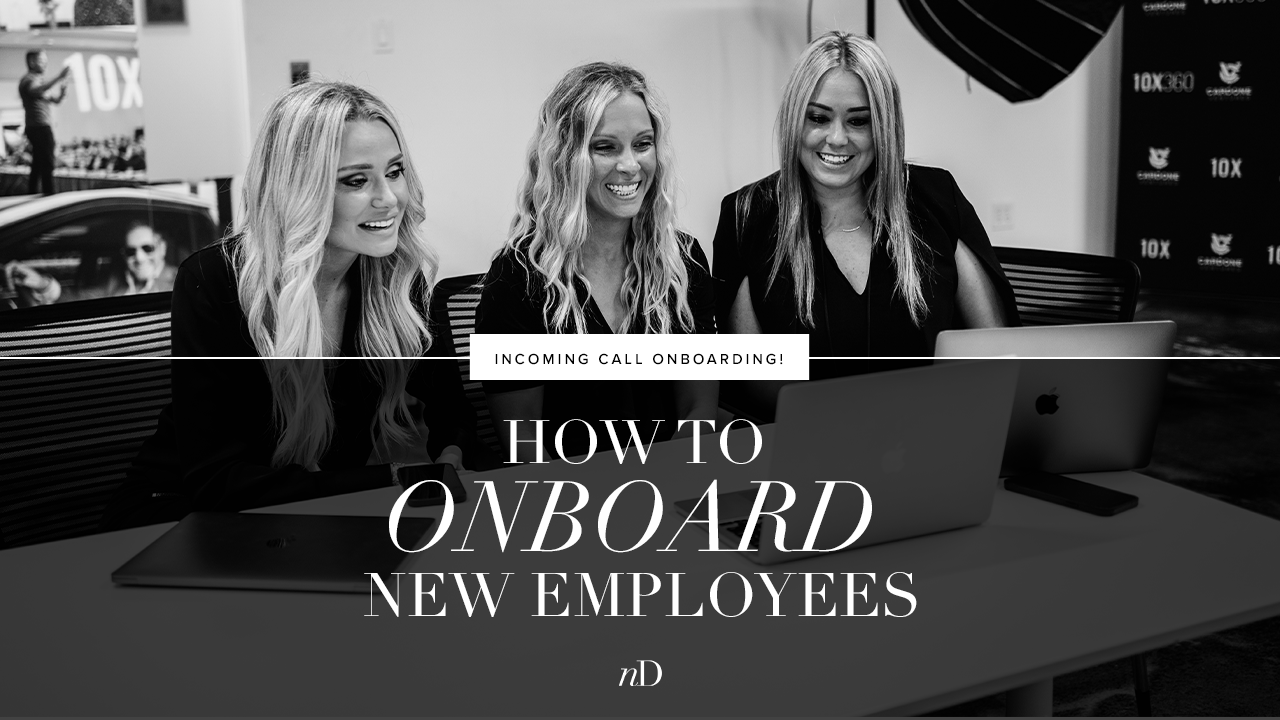First impressions are everything
Onboarding can be one of the most anxiety-inducing experiences in a person’s career. Meeting new people, learning about a whole new job and business, and making first impressions require some serious patience and positivity.
From the perspective of a business owner, a new employee’s onboarding experience can really make or break their success at the company. A good onboarding experience can lead to highly comfortable and confident employees, while a bad onboarding experience can lead to high turnover and a lack of engagement.
As a co-founder and president at Cardone Ventures, it’s my job to help new hires feel comfortable in a new environment so they can thrive in their role once they’re ready to fully dig in. I take this job very seriously, which is why I host an initial onboarding call with every single new employee who joins Cardone Ventures. That’s right — every. single. new. employee.
On my podcast, I gave listeners an inside look at this critical call, and here I’m going to outline some key takeaways of how I approach these initial employee onboarding conversations to ensure new team members are set up for success in their new roles and to tackle the rest of their onboarding period.

Build trust and connection right from the start
Starting a new job at a new company is equal parts nerve-wracking and exciting, but those first few months are often the toughest. You’re thrown into a totally new environment and are facing information overload learning about your role, your department, the organization as a whole, and even your new colleagues. And, a lot of the important things you must learn in the onboarding phase can feel a little boring and overly “corporate.”
So, I always start off these calls with introductions and an ice breaker question so I can get to know new members of the team in the first interaction with them and they can become comfortable sitting in a call with me being their authentic selves.
Allowing new employees to introduce themselves also helps me understand who’s here with me and gives me a chance to adjust my messaging and structure of the call slightly depending on the group. The core information is the same, but I like knowing the roles of those I’m speaking with and getting a glimpse into their personality based on their answer to my icebreaker.
When I lead onboarding calls, I always take the time to introduce myself and my role within the organization, as well, so the group knows who I am, what I’m passionate about, and why I lead these meetings. I answer my own icebreaker questions, too, because it sets a level playing field and helps employees learn more about me in the same way I’m learning about them.
Start with the “big picture” and go from there
A very broad overview of the business and your new hires’ roles within the organization are critical to ensure a smooth onboarding process. Diving into the details too soon can cause important information to get lost and prevent employee buy-in from happening from the start.
That’s why my initial onboarding calls start with the biggest anchors of Cardone Ventures: the business model overview, PPF (Personal, Professional, and Financial goals) planning, and the Employee Maturity Model. While I won’t get too far in the weeds about these topics (maybe I’ll write another blog about those later on, though!), I’ve found that introducing these topics to new hires early in their onboarding lays a foundation that they can build on for the rest of their onboarding.
Giving them an overview of our business model helps them understand how the entire organization is working together toward our mission, which is to help business owners achieve their personal, professional, and financial goals through the growth of their businesses. They can leave this meeting with an understanding of the big picture before digging into the unique role they play in that picture.
PPF planning and the Employee Maturity Model just reinforce the importance of our mission because we are leveraging these tools not only with the businesses we support in partnership but also with our own employees.
I’m fully aware that, unless you’re a partner of Cardone Ventures, you probably don’t have PPF planning or an Employee Maturity Model to share in onboarding, but I bet you have a business model you can walk through and some documentation about goal setting or organizational structure. The bottom line is to start big to lay the groundwork before diving into the details.

Sprinkle in advice & anecdotes throughout
Because every employee is a different person, you can’t control how new hires will engage with the information presented during onboarding. And, ultimately, it’s not your job to force them to act or think a certain way.
What you can do, however, is offer advice and share stories of employees that have been in their shoes that will help them be more successful in the long run. You’ve seen what it takes to be successful in your business and can help new hires on that same path.
For example, when I present PPF planning, I always encourage new hires to be as specific and open as possible when sharing personal goals with their managers. I’ve seen many employees do the bare minimum on personal goals through this process and ultimately regret not having a more specific plan that their manager could help them achieve. As often as I can, I also share stories of employees who have thrived in their PPFs to demonstrate this advice.
While I’m certainly not forcing new hires to get super deep with their managers, especially if they aren’t comfortable doing so, I like to offer this advice because I think it makes a big difference in employee success and shows that I care about the success of our team.
Have visuals to show and demonstrate your message
Nothing is more boring than a long onboarding presentation where you have nothing to look at other than the person’s face who’s presenting to you, which is why visuals are so important in onboarding meetings. Whether you want to assemble and rock a full-fledged deck or just show some supporting docs, giving new hires something to look at helps keep their attention and leads to a better understanding of topics.
–
How to build your own employee onboarding process
These calls I have with new hires are just a small part of new employee onboarding at Cardone Ventures, but I like to think they’re one of the most important parts. Whether you feel really confident about the effectiveness of your onboarding or are looking for opportunities to improve, these steps can help you build an employee onboarding process that connects and inspires your new hires.
For more tips about building and leading a successful and effective team, subscribe to the Building Billions podcast or grab a copy of my best-selling book, TeamWork.

